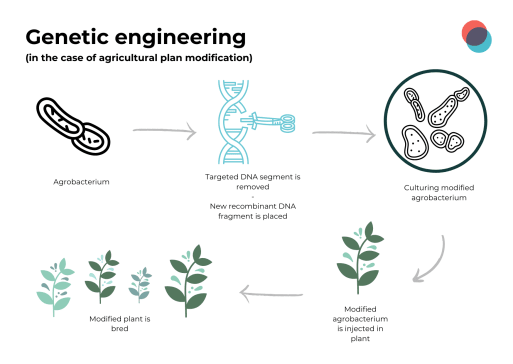Genetic engineering and its importance in research and development
March 30th, 2022, by Labtoo's team
What is Genetic engineering?
In a few words, it is the manipulation of an organism’s genes using biotechnologies. Modifications are made using recombinant DNA technologies. Those technologies proceed by combining two or more genes and injecting the construct into the organism.
Before genetic engineering, organisms could be modified by breeding and selecting the offspring with the desired specificities. But with genetic engineering, the modification is made directly on the organism’s genes.

Using recombinant DNA technology or other techniques such as CRISPR-Cas9, it is now possible to target and modify precise genetic sequences.
What is it used for?
Genetic engineering is widely used in labs, often to create new in vivo models in animals such as mice. The applied domain where genetic engineering has been the most used is probably Agriculture. It is used to integrate special genes into plants to give them resistance to diseases and confer better nutritional values. It also has multiple applications in gene therapies for humans, for instance, T cells used in next-generation cancer immunotherapies are genetically engineered to express a synthetic chimeric antigen receptor (CAR).
Any possible issues?
With the democratization of genetic engineering, a lot of controversies occurred. Typically, people are complaining about the results of modifying crops or plants and have worries about the environmental outcomes. On top of that, some scientists expressed the idea of genetically modifying human genes, or even chimeras of organisms will be carried over generations. Ethical questions are raised, and we would love to hear your opinion on this matter!